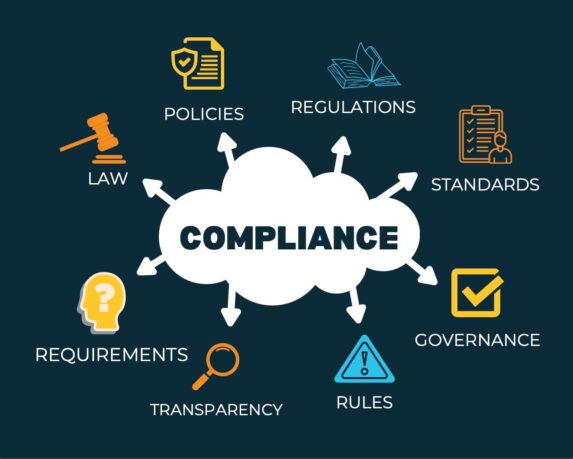Automate the Protocol with eSource

Hiding in plain sight – CRIO eSource is the biggest opportunity for sponsors.
While the clinical research industry has automated many processes, there is one area that is still mostly paper-bound. This is the source of one of the greatest inefficiencies in research today. Automating this one process could drive 20% cost savings in a trial, drastically reduce protocol deviations, improve patient safety, virtually eliminate audit risk, and hasten speed to market.
What is this paper-based process, and what is the technology that automates it? The process is the protocol execution by the sites. The technology is CRIO’s site-based eSource, which has already been widely adopted by leading research sites. This presents a huge and ready-made opportunity for sponsors.
The problem with paper charts
The protocol not only specifies what endpoint data to collect, but also how to collect that data. This standardization ensures that the endpoint data is comparable over time, subjects and sites. Most of the critical endpoint data in a trial is standardized through technology, for example, patient data is captured in ePRO or wearables; lab data in LIMS systems; and drug dispensation data in IRT systems. But one source of endpoint data is not, and that’s the site captured data.
Currently, sites use paper charts1 to record endpoint data such as eligibility, safety (adverse events, vitals), medical history, medications, drug accountability, protocol specific procedures, patient compliance, and more. This data, commonly referred to as source data, is later transcribed into an EDC system. Because sites use paper charts, mistakes occur including:
- differing protocol interpretation
- creating paper charts that have varying degrees of accuracy and rigor
- data collection mistakes against their own charts and in transcription to EDC
The result is that there is no assurance to sponsors that the data being entered into the EDC is accurate, complete or collected per the protocol. The only indication is the monitor’s report after conducting a retrospective, and expensive, on-site visit to review site source records.
CRIO automates the protocol
CRIO’s site -based eSource system solves these inefficiencies and inaccuracies. In contrast to an EDC vendor, CRIO designs the study templates directly from the protocol, not from the endpoints. CRIO’s template sequences the procedures in the protocol’s specified order, enriches them with detailed instructions, and incorporates alerts, branching logic and other automation to guide the site through the protocol specified methodology.
Additionally, CRIO’s system has unique workflows that further reinforce compliance with the protocol – such as visit scheduling, eConsent, patient payments/stipends, site finance management, EMR integration, and appointment reminders. Ultimately, CRIO ensures that sites are capturing endpoint data as specified by the protocol. Using CRIO eSource, sponsors can now standardize protocol compliance across sites.2
An example: Blood pressure is not the same across studies
Virtually every protocol has a blood pressure procedure, often at screening, randomization, and every treatment visit. Every protocol specifies how that blood pressure is to be captured, and that methodology will differ across studies.
For instance, the protocol may specify that the first blood pressure be taken in the dominant arm after the patient has been seated for 5 minutes. Thereafter, every blood pressure measurement must be taken in the same manner, using the same arm. However, some protocols may require that the arm with the higher blood pressure during the first visit be designated as the reference arm, so both arms must be measured. The protocol may specify a standing or supine position, or that three successive blood pressures must be taken and then averaged. Therefore sponsors must understand that their study’s blood pressure procedure is not the same as another study’s. It’s a unique procedure, specific to that study.
CRIO eSource, widely used and drives 40-70% better quality
Over 2,000 sites worldwide in 18 countries have adopted CRIO eSource by licensing directly from CRIO. These sites adopt CRIO to improve quality, save time and enable remote collaboration within their organizations. CRIO is currently being used on nearly 5,000 unique protocols for nearly 1,000 sponsors, across every major therapeutic area. On some trials, upwards of 30% of U.S. sites are using CRIO. As the site industry matures, the percentage will increase, with larger networks consolidating locations and adopting eSource to drive standardization.
With such widespread use, CRIO has documented substantial, empirical improvements from use of the CRIO eSource system. The most authoritative study, conducted by the QA department of one of the world’s largest vaccine networks, observed a 38% lower protocol deviation rate per visit in CRIO studies vs. paper studies. Given that this is a highly experienced site network known for its quality processes, this reduction was statistically significant and a conservative figure. In another analysis, sites using CRIO eSource experienced a 70% lower risk of an adverse finding from an FDA inspection than sites overall. And in a recent survey of CRAs who have monitored within the CRIO system, by a margin of 9:1, CRAs agree that sponsors benefit when more sites use CRIO, or a similar system.
What does 40-70% quality improvement mean?
This type of quality gain has huge implications for sponsors who gain significant downstream efficiencies due to less rework by both CRAs and sites. Sponsors can increase confidence in the conclusions drawn from the study because confounding factors have been minimized. CRIO also ensures more accurate randomizations and improved patient safety. And that’s just the start of what CRIO can do.
How CRIO eSource replaces the EDC
The obvious question is, if the sites are collecting data electronically, could this get into the EDC? This is the wrong question to ask. In our followup article, How eSource replaces the EDC, we’ll explore:
- the reasons why CRIO eSource data shouldn’t be recycled into another EDC
- how sponsors should institute continual review and locking, and
- how this practice could drive significant gains in quality, speed, and cost effectiveness.
Read: How eSource Replaces the EDC.
___________________________
Footnotes:
1 Sites do not use EMR. In an Oct 2022 ACRP survey, 75% of sites outside oncology and surgery reported that they do not use the EMR for source data collection. 20% of the remaining 25% use a combination of EMR and paper. CRIO has researched the reasons for this, including the high level of inaccuracy in most EMR systems, read our findings here.
2 Similarly, the blood pressure in the EMR is not collected per any study protocol, as providers generally do not record the arm used or patient position. For care purposes, that does not matter – the provider is looking for trendlines, not precision. This correlates to the earlier observation that sites generally do not use the EMR for source data collection.




